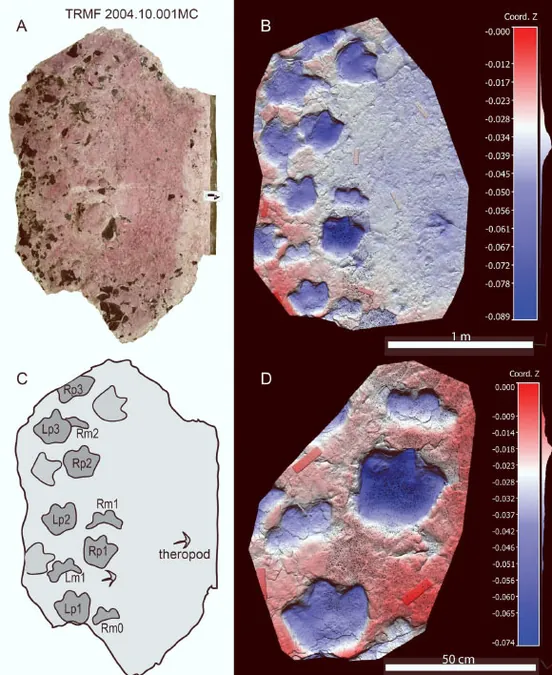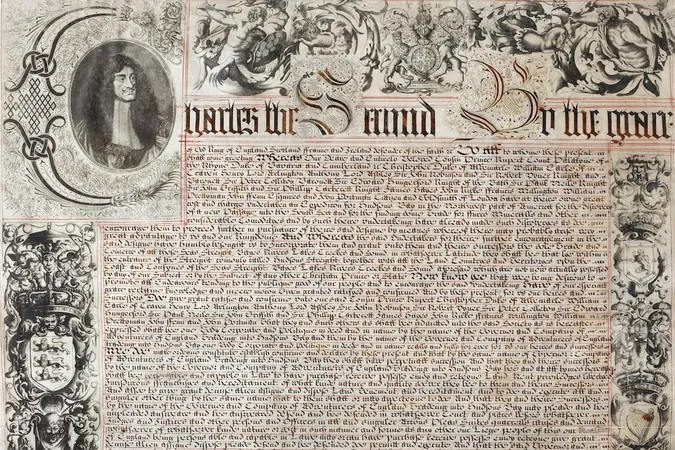
Unearthed: 100-Million-Year-Old Footprints Reveal Ancient Armored Dinosaurs in Canada!
2025-04-14
Author: William
Ancient Footprints Discovered: A Window into the Cretaceous Past
In a groundbreaking discovery, paleontologists have uncovered 100-million-year-old footprints belonging to a new species of armored dinosaurs known as Ruopodosaurus clava, in the breathtaking landscapes of northeastern British Columbia and northwestern Alberta. This remarkable finding sheds light on the existence of ankylosaurid ankylosaurs during the mid-Cretaceous period in North America.
Meet Ruopodosaurus clava: The Club-Wielding Dinosaur!
Dr. Victoria Arbour, a leading evolutionary biologist and paleontologist from the Royal BC Museum, elaborates on the significance. "There are primarily two groups of ankylosaurs: the nodosaurids, which sport flexible tails and four toes, and the ankylosaurids, easily identified by their formidable tail clubs and three toes—just like Ruopodosaurus clava!"
A First in Dinosaur Footprints!
What sets Ruopodosaurus clava apart? Unlike its well-known cousin, the Tetrapodosaurus borealis, which boasted four toes, these newly discovered tracks feature only three, marking them as the first known ankylosaurid footprints ever found in the world!
A Peek into the Past
Though the exact appearance of Ruopodosaurus clava remains a mystery, researchers speculate that it measured around 16 to 20 feet long, complete with spikes and an armored body, as well as a stiff tail ending in a club.
"Ankylosaurs are among my favorite dinosaurs to study, so identifying this new species in British Columbia is incredibly thrilling," Dr. Arbour enthuses.
Filling the Gaps in Our Understanding
Dating back approximately 100 to 94 million years, the footprints are crucial, filling a significant gap in the fossil record. Previously, no ankylosaurid bones had been found from 100 to 84 million years ago, leading to questions about their existence in North America during that time. These footprints confirm that these armored giants thrived even when skeletal evidence was lacking.
Coexisting Giants in the Cretaceous
The discovery also highlights that both nodosaurids and ankylosaurids coexisted in this rich prehistoric ecosystem. Dr. Charles Helm, a scientific advisor at the Tumbler Ridge Museum, expresses excitement: "Since two young boys first found ankylosaur tracks in Tumbler Ridge in 2000, we have associated this area with these fascinating creatures. Now, we know that not one, but two types of ankylosaurs called this region home, with Ruopodosaurus clava being exclusive to Canada!"
Unlocking the Secrets of the Past
This thrilling discovery not only enriches our understanding of the evolution of dinosaurs in North America but also emphasizes the importance of the Peace Region of British Columbia. As Dr. Arbour concludes, "This find is just the beginning; there are still so many secrets waiting to be uncovered about these ancient inhabitants of Canada!"
Published Findings Worth Celebrating!
For those intrigued by the world of paleontology, the fascinating details of Ruopodosaurus clava's discovery are documented in the Journal of Vertebrate Paleontology, shining a spotlight on the rich history that lies just beneath our feet.









 Brasil (PT)
Brasil (PT)
 Canada (EN)
Canada (EN)
 Chile (ES)
Chile (ES)
 Česko (CS)
Česko (CS)
 대한민국 (KO)
대한민국 (KO)
 España (ES)
España (ES)
 France (FR)
France (FR)
 Hong Kong (EN)
Hong Kong (EN)
 Italia (IT)
Italia (IT)
 日本 (JA)
日本 (JA)
 Magyarország (HU)
Magyarország (HU)
 Norge (NO)
Norge (NO)
 Polska (PL)
Polska (PL)
 Schweiz (DE)
Schweiz (DE)
 Singapore (EN)
Singapore (EN)
 Sverige (SV)
Sverige (SV)
 Suomi (FI)
Suomi (FI)
 Türkiye (TR)
Türkiye (TR)
 الإمارات العربية المتحدة (AR)
الإمارات العربية المتحدة (AR)